AP GOV
4.5(2)
4.5(2)
Card Sorting
1/42
Earn XP
Description and Tags
Study Analytics
Name | Mastery | Learn | Test | Matching | Spaced |
|---|
No study sessions yet.
43 Terms
1
New cards
Amendment 1
RAPPS.- freedom of Religion, Assembly, Petition, Press, and Speech. (Westboro Baptist cult)
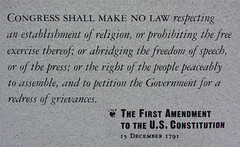
2
New cards
Amendment 2
the right to bear arms

3
New cards
Amendment 4
no illegal search and seizures without warrant

4
New cards
Amendment 8
no cruel or unusual punishment, includes excessives bails and fines.
8 looks like a paddle
8 looks like a paddle
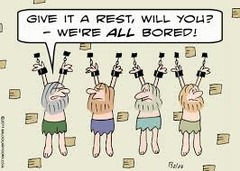
5
New cards
Amendment 9
human basic rights, arent listed in the Bill of Rights
9 rhymes with 9
9 rhymes with 9
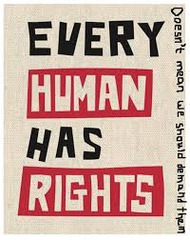
6
New cards
Amendment 10
reserved powers, the states also hold power.
Prevents government from getting too strong
Prevents government from getting too strong
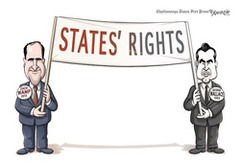
7
New cards
Amendment 11
suits against states
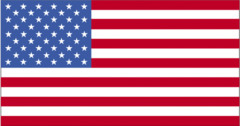
8
New cards
Amendment 12
revises procedure for electing president and vice president
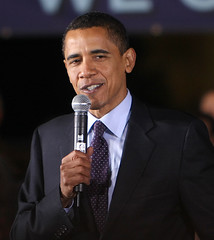
9
New cards
Amendment 13
abolishes slavery

10
New cards
Amendment 14
defines US citizenship; guarantees all citizens "equal protection of the laws"
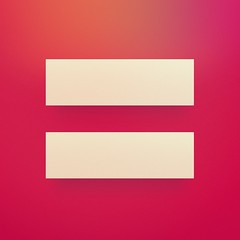
11
New cards
Amendment 15
prohibits restrictions on the right to vote based on race and color

12
New cards
Amendment 16
gives congress power to levy an income tax

13
New cards
Amendment 17
enables voters to elect senators directly
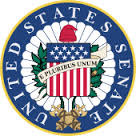
14
New cards
Amendment 19
gives women right to vote
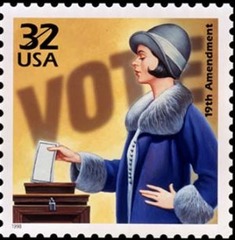
15
New cards
Amendment 20
changes dates of congressional and presidential terms

16
New cards
Amendment 22
limits presidents to two terms in office
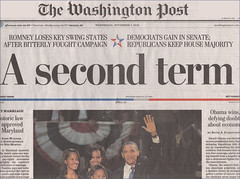
17
New cards
Amendment 24
abolishes poll taxes

18
New cards
Amendment 25
establishes procedures for succession to the presidency
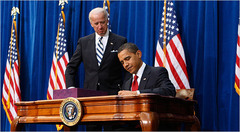
19
New cards
Federalist 10
written by James Madison
\
prevents tyranny
\
a strong, united republic would be more effective than the individual states at controlling “factions”
a large republic will help control factions because when more representatives are elected, there will be a greater number of opinions. Therefore, it is far less likely that there will be one majority oppressing the rest of the people.
\
prevents tyranny
\
a strong, united republic would be more effective than the individual states at controlling “factions”
a large republic will help control factions because when more representatives are elected, there will be a greater number of opinions. Therefore, it is far less likely that there will be one majority oppressing the rest of the people.
20
New cards
Brutus 1
Robert Yates Anti- Federalist-
series of essays to encourage NY to reject Constitution
Bill of Rights is necessary
free republic cannot be free
judicial authority broaden fed govt pwr
series of essays to encourage NY to reject Constitution
Bill of Rights is necessary
free republic cannot be free
judicial authority broaden fed govt pwr
21
New cards
Federalist 51
* Written by James Madison
* government split into 3 branches
* legislative branch split into house or reps and senate
* judicial branch needs to be chosen by president with senate’s approval for qualified candidates
* keeps down power of factions
* government split into 3 branches
* legislative branch split into house or reps and senate
* judicial branch needs to be chosen by president with senate’s approval for qualified candidates
* keeps down power of factions
22
New cards
federalist 70
* Hamilton wrote this
* argues for single energetic executive president
* too many presidents can lead to confusion
* act quick
* accountable
* argues for single energetic executive president
* too many presidents can lead to confusion
* act quick
* accountable
23
New cards
federalist 78
* Discusses the power of judicial review
* -Argues that the federal courts have the duty to determine whether acts of Congress are constitutional
* Justifies the structure/function of the Judicial Branch
* -Argues that the federal courts have the duty to determine whether acts of Congress are constitutional
* Justifies the structure/function of the Judicial Branch
24
New cards
Letter from Birmingham Jail
* Written by MLK JR
* Justice delayed is justice denied
* letter defends the strategy of nonviolent resistance to racism and highlights the importance of civil disobedience in the fight for civil rights. It is considered a landmark document in the American civil rights movement and a masterpiece of persuasive writing.
* Justice delayed is justice denied
* letter defends the strategy of nonviolent resistance to racism and highlights the importance of civil disobedience in the fight for civil rights. It is considered a landmark document in the American civil rights movement and a masterpiece of persuasive writing.
25
New cards
US Constitution
Preamble outlines job of government: We the People \[popular sovereignty; consent of the governed\] of the United States, in Order to form a more perfect Union, establish Justice, insure domestic Tranquility, provide for the common defence, promote the general Welfare, and secure the Blessings of Liberty to ourselves and our Posterity, do ordain and establish this Constitution for the United States of America. Outlines the structure of the government \[republic; federalism\] Three branches of government \[separation of power; checks and balances\] Relationships between states \[extradition clause; privileges and immunities; full faith and credit clause\] Amendment process? \[Article V\] Proposed by Congress or Convention, ratified by 3⁄4 state legislatures
26
New cards
Articles of Confederation
Written by John Dickinson continental congress.
Confederal Government (state sovereignty);
Weak- Congress not given many powers to prevent tyranny
Unicameral Legislature
○ Each State = 1 vote; 9/13 votes needed to pass laws
\
No Executive/ No Judicial (cannot settle interstate disputes); no power to tax citizens No power to raise an army
Confederal Government (state sovereignty);
Weak- Congress not given many powers to prevent tyranny
Unicameral Legislature
○ Each State = 1 vote; 9/13 votes needed to pass laws
\
No Executive/ No Judicial (cannot settle interstate disputes); no power to tax citizens No power to raise an army
27
New cards
Declaration of Independence
THomas Jefferson
Declared Independence from Britain – justification for “divorce”
Identified Natural Rights- Life, Liberty, Pursuit of Happiness and govt’s job to protect them
Influenced heavily by John Locke
\
○ Consent of the Governed; Popular Sovereignty; Social Contract Theory ○ Limited Government
Declared Independence from Britain – justification for “divorce”
Identified Natural Rights- Life, Liberty, Pursuit of Happiness and govt’s job to protect them
Influenced heavily by John Locke
\
○ Consent of the Governed; Popular Sovereignty; Social Contract Theory ○ Limited Government
28
New cards
__***Marbury v. Madison (1803)***__
Established Judicial Review; “midnight judges”; John Marshall; power of the Supreme Court
29
New cards
__***McCulloch v. Maryland (1819)***__
Established national supremacy; established implied powers; use of elastic clause; state unable to tax fed. Institution; John Marshall; “the power to tax the power to destroy”
30
New cards
Gibbons V. Odgens
\
The Supreme Court ruled that the federal government has the power to regulate interstate commerce. This landmark case established the Commerce Clause of the Constitution as a basis for federal regulation of commerce. The case involved a dispute between two steamboat operators over who had the right to operate on a waterway between New York and New Jersey. The Court's decision affirmed the power of the federal government to regulate commerce between states and set an important precedent for future cases involving federal regulation of commerce.
The Supreme Court ruled that the federal government has the power to regulate interstate commerce. This landmark case established the Commerce Clause of the Constitution as a basis for federal regulation of commerce. The case involved a dispute between two steamboat operators over who had the right to operate on a waterway between New York and New Jersey. The Court's decision affirmed the power of the federal government to regulate commerce between states and set an important precedent for future cases involving federal regulation of commerce.
31
New cards
***Schenck v. United States*** **(1919)**
Short Summary: During World War I, a pair of socialists distributed leaflets that stated the draft violated the 13th Amendment - which prohibits involuntary servitude. The leaflet wanted people to disobey the draft. was charged with violating the Espionage Act of 1917. They appealed on the grounds of the First Amendment.
Constitutional Issue: This was a First Amendment case and the question was whether the Espionage Act violated the First Amendment and if it was an appropriate way that Congress exercised its wartime authority.
Holding and Constitutional Principle: The Supreme Court held that the Espionage Act did not violate the First Amendment and it was an appropriate exercise of Congress’ wartime authority. This was a key limitation on the First Amendment as the free speech clause does not allow for advocacy of unlawful behavior.
Constitutional Issue: This was a First Amendment case and the question was whether the Espionage Act violated the First Amendment and if it was an appropriate way that Congress exercised its wartime authority.
Holding and Constitutional Principle: The Supreme Court held that the Espionage Act did not violate the First Amendment and it was an appropriate exercise of Congress’ wartime authority. This was a key limitation on the First Amendment as the free speech clause does not allow for advocacy of unlawful behavior.
32
New cards
US V Lopez (1995)
* **Short Summary**: A Texas high school senior who took a concealed weapon inside his school. Federal charges were soon imposed because of his violation of the Gun-Free School Zones Act of 1990. The act stated that individuals could not possess firearms within school zones based on the premise of the Commerce Clause.
* **Constitutional Issue**: This case explored a constitutional issue involving the commerce clause, and whether the Gun-Free School Zones Act of 1990 exceeded the power allowed by the clause.
* **Holding** **and Constitutional Principles**: In the ruling, the law was considered unconstitutional since having a gun in the school zone did not substantially affect *interstate commerce*, which is a clear provision in the commerce clause. This case also reaffirmed the Tenth Amendment, which protects states’ rights. It was clear through this case that the commerce clause did not grant Congress limitless power.
* ***Straight from the AP US Government Course Description***: this case “(introduced) a new phase of federalism that recognized the importance of state sovereignty and local control.”
* **Constitutional Issue**: This case explored a constitutional issue involving the commerce clause, and whether the Gun-Free School Zones Act of 1990 exceeded the power allowed by the clause.
* **Holding** **and Constitutional Principles**: In the ruling, the law was considered unconstitutional since having a gun in the school zone did not substantially affect *interstate commerce*, which is a clear provision in the commerce clause. This case also reaffirmed the Tenth Amendment, which protects states’ rights. It was clear through this case that the commerce clause did not grant Congress limitless power.
* ***Straight from the AP US Government Course Description***: this case “(introduced) a new phase of federalism that recognized the importance of state sovereignty and local control.”
33
New cards
Engel V. Vitale (1962)
* **Short Summary**: The New York Board of Regents had authorized that at the beginning of each day, a short but *voluntary* prayer would be recited. Several organizations filed suit against the Board of Regents, claiming that the prayer violated the Constitution. The New York Court of Appeals dismissed their arguments.
* **Constitutional Issue**: This case was significant and interesting because this prayer was both voluntary and non-denominational. However, the organizations filed suit based on a violation of the Establishment Clause of the Constitution, which states that a law could not be made “respecting an establishment of religion.”
* **Holding and Constitutional Principles**: The court held that states could not hold prayers in public school EVEN IF it was voluntary and EVEN IF the prayer did not adhere to a specific religion. Because the act of prayer was considered a religious activity, having it occur in a public school (which is funded by the government) would go against the establishment clause of the first amendment.
* ***Main Idea?*** School sponsorship of religious activities = violation of first amendment
* **Constitutional Issue**: This case was significant and interesting because this prayer was both voluntary and non-denominational. However, the organizations filed suit based on a violation of the Establishment Clause of the Constitution, which states that a law could not be made “respecting an establishment of religion.”
* **Holding and Constitutional Principles**: The court held that states could not hold prayers in public school EVEN IF it was voluntary and EVEN IF the prayer did not adhere to a specific religion. Because the act of prayer was considered a religious activity, having it occur in a public school (which is funded by the government) would go against the establishment clause of the first amendment.
* ***Main Idea?*** School sponsorship of religious activities = violation of first amendment
34
New cards
Wisconsin V Yoder (1972)
* **Short Summary**: this parent, as well as other Amish parents, refused to send their children to school after the 8th grade. In accordance with their religion, they did not agree with high school attendance. They were later charged under a Wisconsin law that required students to attend school until age 16.
* **Constitutional Issue**: This case relates to the other major religious clause of the 1st Amendment: the free exercise clause. By requiring Wisconsin parents to send their children to school, without a faith exception, did it violate the parents' rights to freely exercise their religion?
* **Holding and Constitutional Principles**: The court held that the requirement to send children to school beyond the eighth grade was unconstitutional. It stated that an individual’s interest in the free exercise of religion was more powerful than a federal interest in sending children to school beyond the eighth grade.
* **Constitutional Issue**: This case relates to the other major religious clause of the 1st Amendment: the free exercise clause. By requiring Wisconsin parents to send their children to school, without a faith exception, did it violate the parents' rights to freely exercise their religion?
* **Holding and Constitutional Principles**: The court held that the requirement to send children to school beyond the eighth grade was unconstitutional. It stated that an individual’s interest in the free exercise of religion was more powerful than a federal interest in sending children to school beyond the eighth grade.
35
New cards
TINKER V. DES MOINES INDEPENDENT COMMUNITY SCHOOL DISTRICT (1969)
* **Short Summary**: A group of students decided to wear black armbands in order to protest the Vietnam War. this person and another person decided that they would wear their armbands to school despite warnings from school administration. After wearing the armbands to school, they were sent home. The students decided to sue their school district for violating the freedom of expression.
* **Constitutional Issue**: The main question that was addressed here was whether the prohibition against wearing these armbands (and in general - symbolic protest) violated the freedom of speech clause of the First Amendment.
* **Holding and Constitutional Principle**: The Supreme Court held that students still have free speech rights at school, and in order to justify the suppression of speech, the speech must ***substantially interfere*** with school operations (explore the case *Bethel School District v. Fraser* - it’s interesting). As referenced earlier, this case relates directly to the First Amendment, and the ruling confirmed that students’ right of symbolic speech was more powerful than the potential disorder that it could cause.
* ***Majority Opinion***: A common phrase you might hear is: “students don’t shed their rights at the schoolhouse gate.” This quote comes from the majority opinion in this case!
* **Constitutional Issue**: The main question that was addressed here was whether the prohibition against wearing these armbands (and in general - symbolic protest) violated the freedom of speech clause of the First Amendment.
* **Holding and Constitutional Principle**: The Supreme Court held that students still have free speech rights at school, and in order to justify the suppression of speech, the speech must ***substantially interfere*** with school operations (explore the case *Bethel School District v. Fraser* - it’s interesting). As referenced earlier, this case relates directly to the First Amendment, and the ruling confirmed that students’ right of symbolic speech was more powerful than the potential disorder that it could cause.
* ***Majority Opinion***: A common phrase you might hear is: “students don’t shed their rights at the schoolhouse gate.” This quote comes from the majority opinion in this case!
36
New cards
New York Times CO V US (1971)
* **Short Summary**: This case, also known as the Pentagon Papers case had to do with the First Amendment. The Nixon Administration tried to prevent the -------- from publishing material that belonged to a Defense Department study about US intervention in Vietnam. President Nixon stated that it was necessary to national security to prohibit it before publication, also known as prior restraint.
* **Constitutional Issue**: The Constitutional issue that revolved around this case was whether the Nixon administration’s prior restraint was constitutional and if preventing the publication of “classified material” was a violation of the First Amendment’s freedom of the press.
* **Holding and Constitutional Principle**: The Supreme Court, in this case, bolstered the freedom of the press guaranteed by the First Amendment. In a 6-3 vote, the Court established that there was a “heavy presumption against prior restraint” even for national security purposes. This is a key case to know for freedom of the press!
* **Constitutional Issue**: The Constitutional issue that revolved around this case was whether the Nixon administration’s prior restraint was constitutional and if preventing the publication of “classified material” was a violation of the First Amendment’s freedom of the press.
* **Holding and Constitutional Principle**: The Supreme Court, in this case, bolstered the freedom of the press guaranteed by the First Amendment. In a 6-3 vote, the Court established that there was a “heavy presumption against prior restraint” even for national security purposes. This is a key case to know for freedom of the press!
37
New cards
### **Gideon v. Wainwright (1963)**
* **Short Summary:** This guy was charged in Florida state court on a felony - breaking and entering charge. During his trial, the guy requested that he receive a court-appointed lawyer; however, in accordance with Florida State law, an indigent defendant could only have an attorney be appointed in capital crimes/cases. The guy then filed a habeas corpus suit, stating that the court’s decision violated his rights to be represented.
* **Constitutional Issue**: The constitutional issue in this case involved the Sixth Amendment and whether the right to counsel guaranteed in this amendment also applied to felony defendants in state court.
* **Holding and Constitutional Principle**: The holding was that the Sixth Amendment’s right to counsel applies to state court defendants via the Fourteenth Amendment. The Court stated that because the *right of counsel* is fundamental, it should be incorporated into the states
* **Constitutional Issue**: The constitutional issue in this case involved the Sixth Amendment and whether the right to counsel guaranteed in this amendment also applied to felony defendants in state court.
* **Holding and Constitutional Principle**: The holding was that the Sixth Amendment’s right to counsel applies to state court defendants via the Fourteenth Amendment. The Court stated that because the *right of counsel* is fundamental, it should be incorporated into the states
38
New cards
Roe V Wade (1973)
* **Short Summary:** Norma McCorvey (Jane Roe) wanted an abortion but could not legally have one in the state of Texas, because of a state law that prohibited abortions except in cases where the mother’s life was in danger. She questioned the legality of this law.
* **Constitutional Issue**: The Constitutional issue in this case was whether a woman’s right to have an abortion was permitted by the Constitution, and whether it fit into the broad right of privacy.
* **Holding and Constitutional Principle**: The Supreme Court held that a woman’s right to an abortion fell within the right of privacy that was clarified in Griswold v. Connecticut, and therefore was protected by the Fourteenth Amendment. Laws in 46 states were affected by this ruling. This ruling ***expanded the definition of privacy***.
* ***Modern Connections***: This case is one of the most controversial cases to appear before the Supreme Court. Political candidates are often split along party lines - Democrats often agree with this holding and Republicans often disagree.
* **Constitutional Issue**: The Constitutional issue in this case was whether a woman’s right to have an abortion was permitted by the Constitution, and whether it fit into the broad right of privacy.
* **Holding and Constitutional Principle**: The Supreme Court held that a woman’s right to an abortion fell within the right of privacy that was clarified in Griswold v. Connecticut, and therefore was protected by the Fourteenth Amendment. Laws in 46 states were affected by this ruling. This ruling ***expanded the definition of privacy***.
* ***Modern Connections***: This case is one of the most controversial cases to appear before the Supreme Court. Political candidates are often split along party lines - Democrats often agree with this holding and Republicans often disagree.
39
New cards
McDonald V Chicago (2010)
* **Short Summary:** State passed a handgun ban law, and several suits were filed against the city challenging the ban after another case (*District of Columbia v. Heller*). In that case, the Court had held that a DC handgun ban violated the Second Amendment. There, since the law was enacted by the federal government, the Second Amendment was applicable.
* **Constitutional Issue**: In this case, the applicability of the Second Amendment to the states was argued, and if the 2nd Amendment’s right to bear arms (interpreted as an individual right) also applied to the states. This involves selective incorporation!
* **Holding and Constitutional Principle**: In its decision, the Court stated that the handgun ban was unconstitutional in a 5-4 decision. Because the right to self-defense was *fundamental*, the 2nd Amendment was incorporated to the states through the Fourteenth Amendment’s due process clause.
\
* **Constitutional Issue**: In this case, the applicability of the Second Amendment to the states was argued, and if the 2nd Amendment’s right to bear arms (interpreted as an individual right) also applied to the states. This involves selective incorporation!
* **Holding and Constitutional Principle**: In its decision, the Court stated that the handgun ban was unconstitutional in a 5-4 decision. Because the right to self-defense was *fundamental*, the 2nd Amendment was incorporated to the states through the Fourteenth Amendment’s due process clause.
\
40
New cards
**Brown v. Board of Education (1954)**
* **Short Summary:** This is one of the most famous cases in US history. Relating to the racial segregation of schools, African American students had been denied admittance to public schools because of these segregation laws, and many argued that this was in violation of the Constitution.
* **Constitutional Issue**: This was an issue in terms of the Equal Protection Clause of the Fourteenth Amendment. A previous case, Plessy v. Ferguson, held that segregated facilities were legal as long as the facilities were equal (called “separate but equal doctrine.”) In this case, racial segregation in public school education was argued against based on the Equal Protection Clause.
* **Holding and Constitutional Principle**: The Court held that “separate but equal is inherently unequal,” and therefore racial segregation of public schools is unconstitutional. The segregated schools allowed by the previous Plessy case were declared unconstitutional. This had a **MAJOR IMPACT** on the US and required desegregation of all public schools
* ***Judicial Review***: The Supreme Court is allowed to reverse previous rulings based on the premise of judicial review. See the Marbury v. Madison case for more info about this!
* ***Stare Decisis***: The case established that this principle, which states that current courts should look to previous decisions for interpretation, will not always be upheld.
* ***Enforced?***: The Court required states to desegregate "with all deliberate speed," and when schools had not desegregated after 10 years, the Court issued another opinion requiring immediate desegregation. This is an example of how judicial decisions may not be enforced by the federal or state executive departments
* **Constitutional Issue**: This was an issue in terms of the Equal Protection Clause of the Fourteenth Amendment. A previous case, Plessy v. Ferguson, held that segregated facilities were legal as long as the facilities were equal (called “separate but equal doctrine.”) In this case, racial segregation in public school education was argued against based on the Equal Protection Clause.
* **Holding and Constitutional Principle**: The Court held that “separate but equal is inherently unequal,” and therefore racial segregation of public schools is unconstitutional. The segregated schools allowed by the previous Plessy case were declared unconstitutional. This had a **MAJOR IMPACT** on the US and required desegregation of all public schools
* ***Judicial Review***: The Supreme Court is allowed to reverse previous rulings based on the premise of judicial review. See the Marbury v. Madison case for more info about this!
* ***Stare Decisis***: The case established that this principle, which states that current courts should look to previous decisions for interpretation, will not always be upheld.
* ***Enforced?***: The Court required states to desegregate "with all deliberate speed," and when schools had not desegregated after 10 years, the Court issued another opinion requiring immediate desegregation. This is an example of how judicial decisions may not be enforced by the federal or state executive departments
41
New cards
### **Citizens United v. Federal Election Commission (2010)**
* **Short Summary:** The Bipartisan Campaign Reform Act of 2002 had previously banned corporations from *independent political spending and direct contributions to campaigns or political parties.* In 2008, Citizens United was not allowed to show an anti-Hillary Clinton movie.
* **Constitutional Issue**: The issue here was whether the BCRA applied to nonprofits, or if the First Amendment’s free speech clause protected such political speech.
* **Holding and Constitutional Principle**: The holding in this case was that corporations should be considered __people__ and therefore their funding of “independent political expenditures cannot be limited.” This is considered a form of __political speech__, which is protected by the free speech portion of the First Amendment.
* ***Further Impact***: This led to the development of Super PACS and a significant increase in the amount of money contributed to political campaigns
* **Constitutional Issue**: The issue here was whether the BCRA applied to nonprofits, or if the First Amendment’s free speech clause protected such political speech.
* **Holding and Constitutional Principle**: The holding in this case was that corporations should be considered __people__ and therefore their funding of “independent political expenditures cannot be limited.” This is considered a form of __political speech__, which is protected by the free speech portion of the First Amendment.
* ***Further Impact***: This led to the development of Super PACS and a significant increase in the amount of money contributed to political campaigns
42
New cards
**Baker v. Carr (1962)**
* **Short Summary:** Someone stated that an old law (1901) that detailed the apportionment for Tennessee’s General Assembly had been ignored, and stated that reapportionment did not take into account the significant change that the state had gone through.
* **Constitutional Issue**: The issue here was unique, and was regarding whether the Supreme Court as a unit had the authority to hear cases that related to legislative apportionment.
* **Holding and Constitutional Principle**: The chief justice and the Court concluded that because of the Fourteenth Amendment issues (through equal protection) that the case seemed to address, the Supreme Court did have the authority to hear this case.
* ***Impact***: This case opened the door to more challenges to unfair redistricting by way of the Equal Protection Clause. Eventually, it also led to the development of the one person, one vote doctrine.
* **Constitutional Issue**: The issue here was unique, and was regarding whether the Supreme Court as a unit had the authority to hear cases that related to legislative apportionment.
* **Holding and Constitutional Principle**: The chief justice and the Court concluded that because of the Fourteenth Amendment issues (through equal protection) that the case seemed to address, the Supreme Court did have the authority to hear this case.
* ***Impact***: This case opened the door to more challenges to unfair redistricting by way of the Equal Protection Clause. Eventually, it also led to the development of the one person, one vote doctrine.
43
New cards
Shaw V Reno (1993)
* **Short Summary:** Several North Carolina residents challenged a proposed, unusually shaped district. They believed that the only purpose of the district was that it would definitely elect African-American representatives.
* **Constitutional Issue**: The constitutional issue here was whether racial gerrymandering took place with this district (it was very narrow) and if the district raised an Equal Protection Clause question.
* **Holding and Constitutional Principle**: The Supreme Court held, in a majority opinion authored by Sandra Day O’Connor, that because the district was shaped in such a clearly odd way, it was enough to prove that there was a very apparent effort to separate voters racially.
* ***Further Impact***: A key fact about this case is that majority-minority districts can be ***constitutionally challenged*** if race was the sole factor in their creation.
* **Constitutional Issue**: The constitutional issue here was whether racial gerrymandering took place with this district (it was very narrow) and if the district raised an Equal Protection Clause question.
* **Holding and Constitutional Principle**: The Supreme Court held, in a majority opinion authored by Sandra Day O’Connor, that because the district was shaped in such a clearly odd way, it was enough to prove that there was a very apparent effort to separate voters racially.
* ***Further Impact***: A key fact about this case is that majority-minority districts can be ***constitutionally challenged*** if race was the sole factor in their creation.